The Principles of Service Design Thinking - Building Better Services
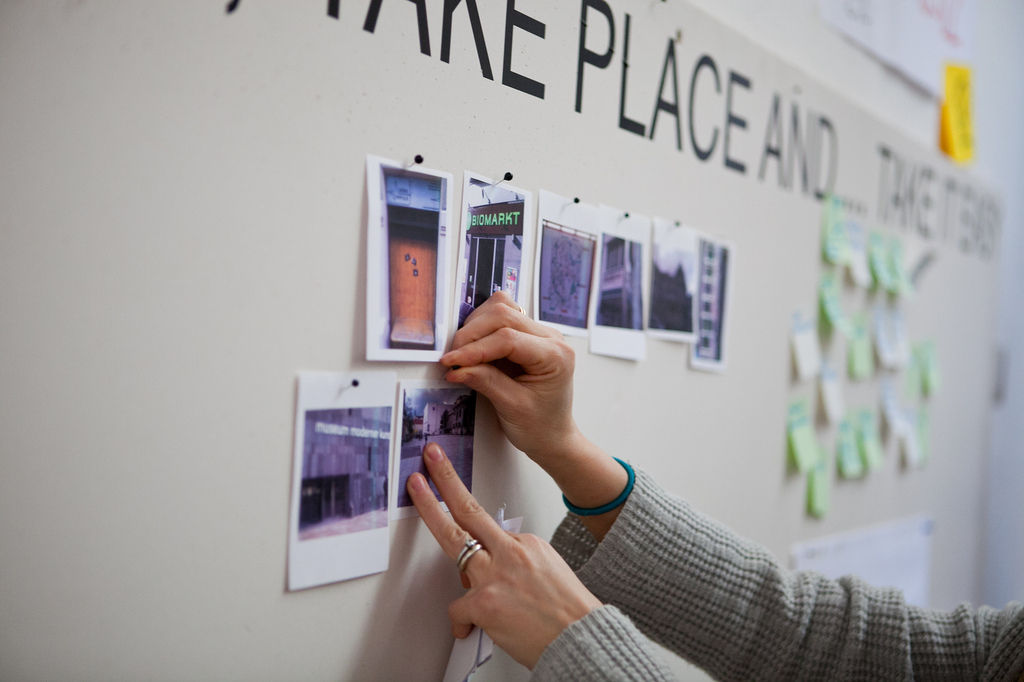
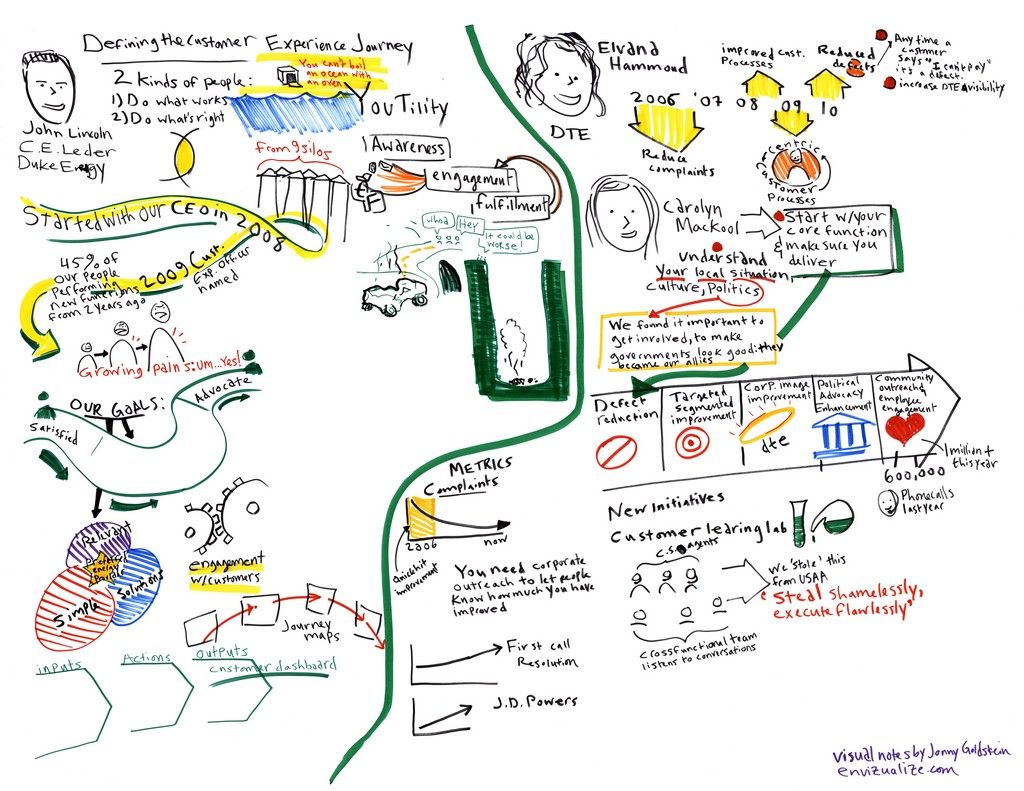
Service design is all about taking a service and making it meet the user’s and customer’s needs for that service. It can be used to improve an existing service or to create a new service from scratch. In order to adapt to service design, a UX designer will need to understand the basic principles of service design thinking and be able to focus on them when creating services. The principles here are drawn from the design ethos of Design4Services, the organization that is committed to developing service design and promoting business transformation. These are widely accepted in the commercial sector. There are other ways of approaching service design, which are not as widely used but which may add value to the service designer’s toolkit; we have listed some of these approaches in the resources section at the end of this piece. When it comes to service design - it can help to remember that “A design isn’t finished until somebody is using it.” Brenda Laurel, designer at MIT.
(c) jonny goldstein, Fair Use Service design feeds into creating great customer experiences. This a customer experience map for a utility service.
General Principles of Service Design
- Services should be designed based on a genuine comprehension of the purpose of the service, the demand for the service and the ability of the service provider to deliver that service.
- Services should be designed based on customer needs rather than the internal needs of the business.
- Services should be designed to deliver a unified and efficient system rather than component-by-component which can lead to poor overall service performance.
- Services should be designed based on creating value for users and customers and to be as efficient as possible.
- Services should be designed on the understanding that special events (those that cause variation in general processes) will be treated as common events (and processes designed to accommodate them)
- Services should always be designed with input from the users of the service
- Services can and should be prototyped before being developed in full
- Services must be designed in conjunction with a clear business case and model
- Services should be developed as a minimum viable service (MVS) and then deployed. They can then be iterated and improved to add additional value based on user/customer feedback.
- Services should be designed and delivered in collaboration with all relevant stakeholders (both external and internal)
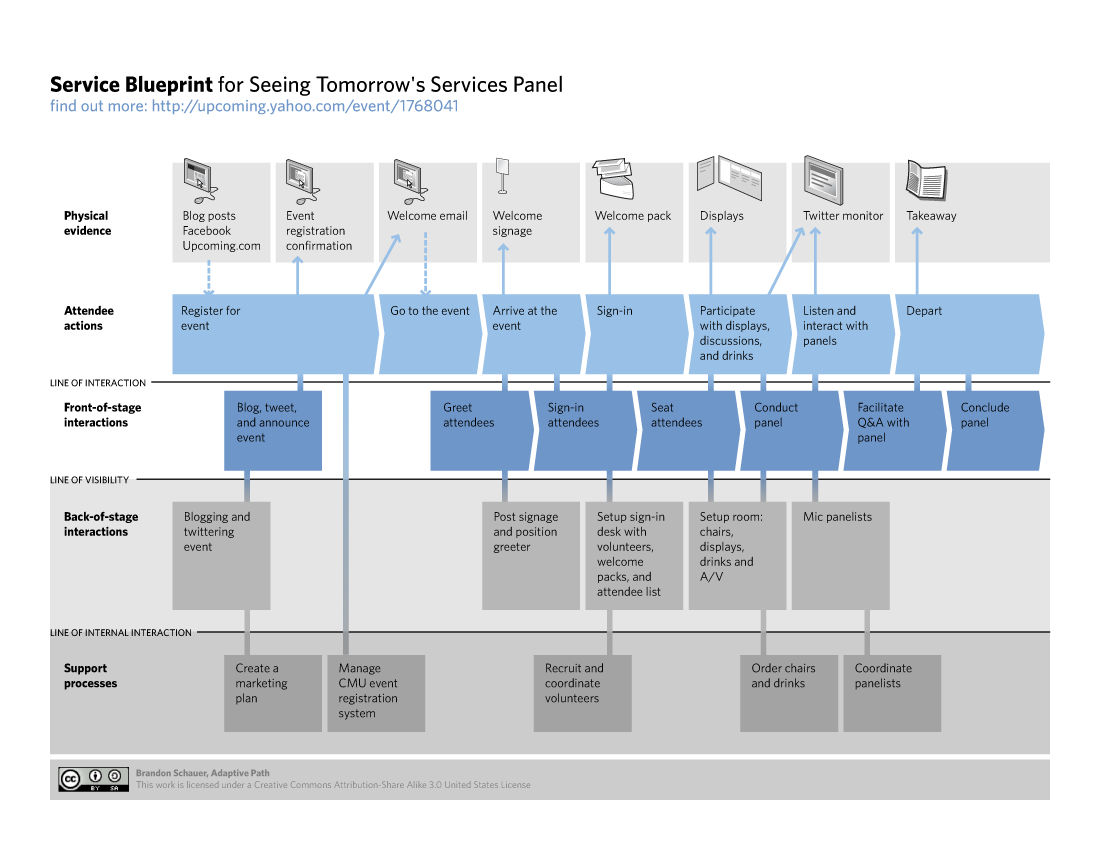
(c) brandon schauer, Fair Use
One of service design’s eventual outputs is the service blueprint which details all interactions with a customer. The service design principles ensure that this blueprint adds customer value when complete.
Process Design Principles for Service Design
Much of service design is found in the design of processes, both internal and external, and these principles underpin this:
- Any activity that fails to add value for the customer should be eliminated or minimized
- Work is always structured around processes and not around internal constructs such as functions, geography, product, etc.
- Work shall not be fragmented unless absolutely necessary. This enables accountability and responsibility from a single individual and reduces delays, rework, etc. It encourages creativity, innovation and ownership of work.
- Processes should be as simple as possible. Focus on reducing process steps, hand overs, rules and controls. Wherever possible the owner of the process should have control over how it is delivered.
- Processes should reflect customer needs and many versions of a process are acceptable if customers have different needs.
- Process variation should be kept to a minimum.
- Process dependencies should be kept to a minimum. (I.e. process in parallel)
- Processes should be internalized rather than overly decomposed (e.g. training is better than work instructions)
- Process breaks and delays must be kept to a minimum
- Reconciliation, controls and inspection of process must be kept to a minimum
- KPIs for processes will only measure things that matter
Organizational Design Principles for Service Design
People are the key to service delivery and some basic principles for organizations can help them realize their full potential:
- Work groups are to be organized so that they match the processes and the competencies required
- Individual workers will be given sufficient autonomy to make useful decisions
- Work will take place in a location where it is done with the most efficiency
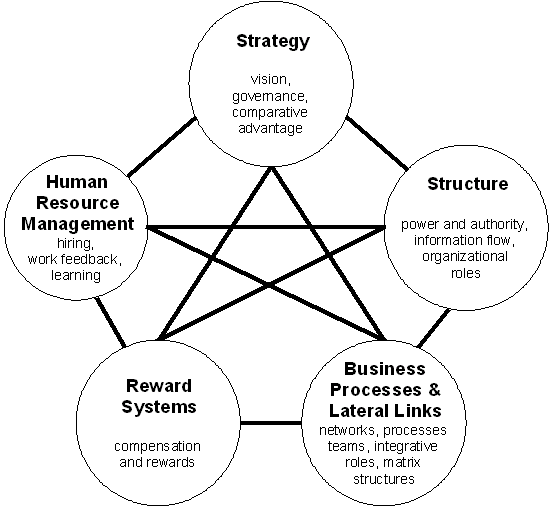
(c) Mschatten, Fair Use
Organizational design is a field all of its own and can become incredibly complex. It’s normally a process managed by HR, but there’s no reason that UX and service designers cannot be involved.
Information Design Principles for Service Design
Information flow is key to delivering high quality services; if people don’t know what they’re supposed to and when they’re supposed to know it – service suffers. These are simple principles for information design in service design:
- Data shall be normalized between the organization and its customers and within the organization itself
- Data shall be easy to transfer and be reusable within the organization and within the partner network
- Wherever possible data entry shall be avoided and be replaced by data lookup, selection and confirmation utilities instead
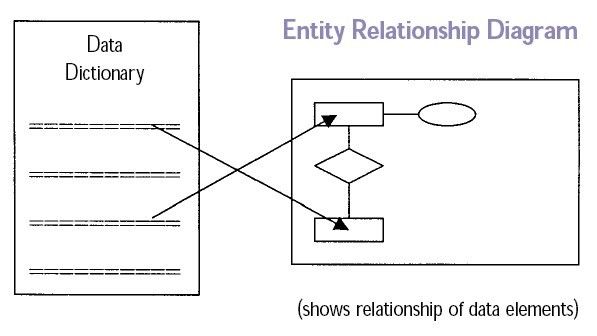
(c) Data Integration Glossary, Fair Use
Data design will normally be carried out by DBAs (Database Administrators) however; UX and service designers should have a large amount of input in ensuring guiding principles are adhered to.
Technology Design Principles for Service Design
Technology design principles are used to support the delivery of service. They include:
- Technology should always be used to enable a service; it should not be the driver of a service.
- Technology should be pulled into a service design rather than pushed into it.
- Technology design is to be flexible enough and agile enough to allow fast modification in the face of changing customer requirements
The Take Away
Service design principles support the development of services which deliver high quality experiences to users and customers. Many of these principles are similar to principles already employed in UX design and it should be relatively easy for an experienced UX designer in products to transition to UX design for services.
Resources
See the design4services website for a free resource with large amounts of resources for service designers.
Hero Image: (c)_dChris, Fair Use






